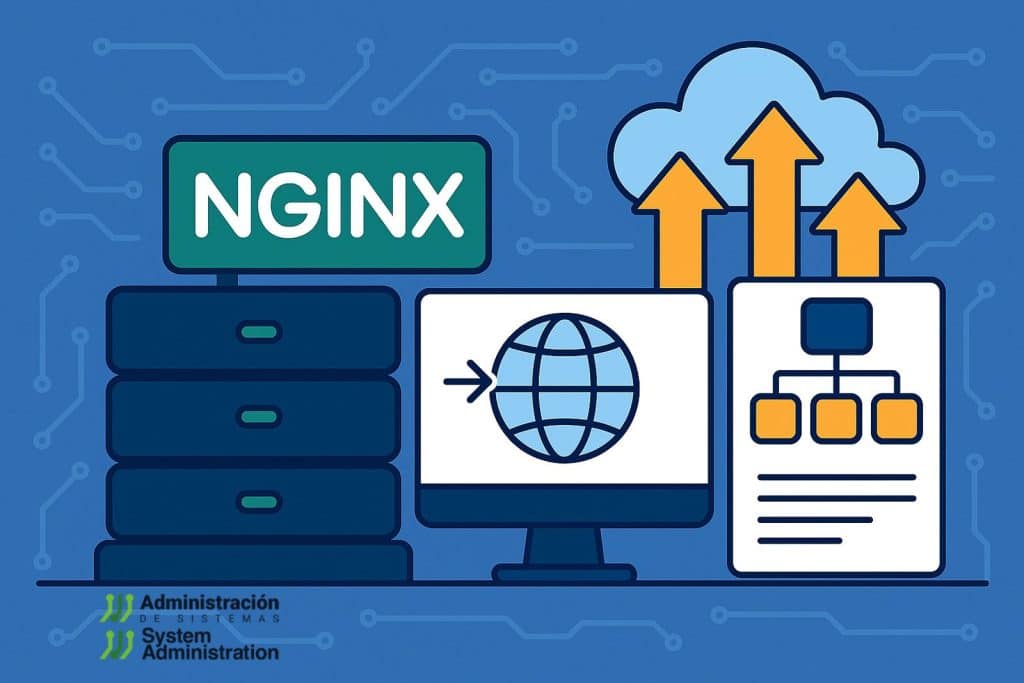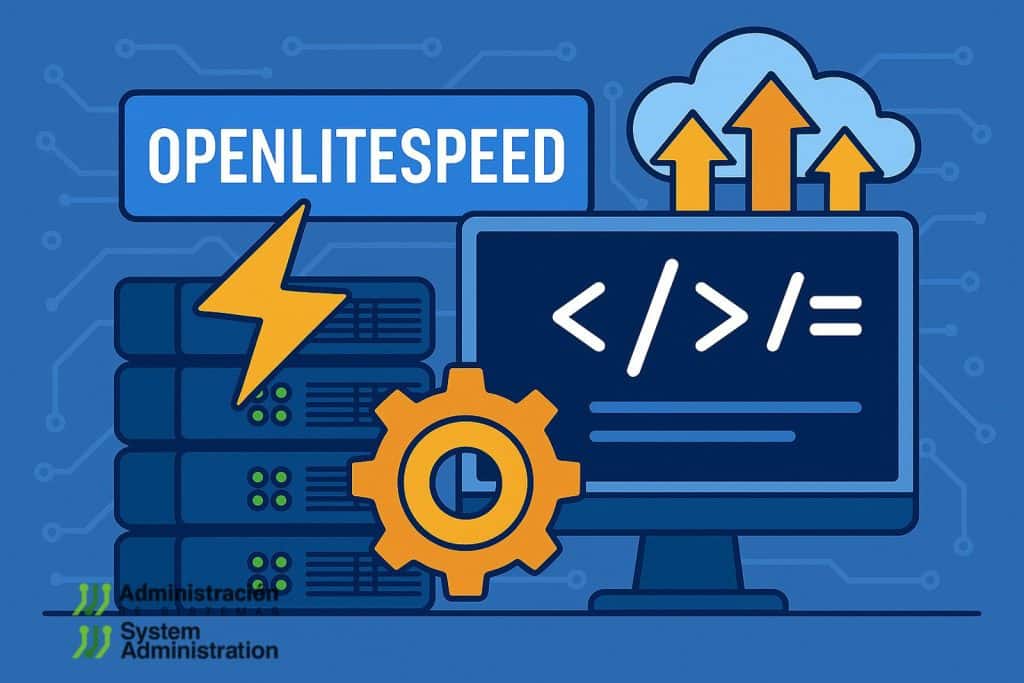What is a web server?
A web server is software that receives HTTP(S) requests from a browser, locates the requested files (HTML, CSS, JS, images, APIs), and sends the responses back so the browser can render the page. It’s a foundational layer that influences speed, scalability, security, resource usage, and ultimately cost.
Why your choice matters
- Speed & Web Vitals — Impacts UX, conversions, and SEO.
- Resource efficiency — Determines how much traffic you can handle per core/GB.
- Security — Affects TLS, hardening, and rate-limiting options.
- Scalability — Governs how easily you can grow and distribute load.
- Cost — Influences infrastructure size, licensing, and maintenance effort.
Overview of popular web servers
Apache HTTP Server
- Model: process/thread-based (MPM prefork/worker/event).
- Strengths: mature, highly modular, .htaccess for per-directory overrides, deep compatibility with stacks (LAMP) and CMSs.
- Considerations: can use more CPU/RAM under high concurrency unless tuned and run with event MPM + PHP-FPM.
Best for: flexible, legacy-friendly deployments; shared hosting; complex rewrites; environments that rely on .htaccess.
NGINX

- Model: event-driven, asynchronous, non-blocking I/O.
- Strengths: excellent at high concurrency, efficient static file serving, reverse-proxy/load balancer, low memory footprint, modern protocol support.
- Considerations: no .htaccess; all changes go through central configs (faster, but less convenient for shared hosting).
Best for: high-traffic sites, reverse proxy/load balancing, API gateways, static asset delivery.
OpenLiteSpeed (open-source edition of LiteSpeed)

- Model: event-driven; optimized LSAPI for PHP.
- Strengths: built-in LSCache, strong PHP performance (WordPress, WooCommerce), HTTP/3/QUIC support, admin GUI.
- Considerations: smaller community than Apache/NGINX; some advanced enterprise features live in the commercial LiteSpeed edition.
Best for: PHP-heavy sites (especially WordPress) seeking high performance with simple built-in caching.
Architecture in a nutshell
| Aspect | Apache | NGINX | OpenLiteSpeed |
|---|---|---|---|
| Concurrency model | Process/thread (MPM) | Event-driven, async | Event-driven, async |
| PHP integration | mod_php (legacy) or PHP-FPM | PHP-FPM (FastCGI) | LSAPI (very fast for PHP) |
| Per-directory config | .htaccess supported | No (.htaccess not used) | Reads Apache-style rules, supports .htaccess |
| Reverse proxy/LB | Possible (mod_proxy) | Excellent | Good |
Performance: Apache vs. NGINX vs. OpenLiteSpeed
Key caveat: Web server benchmarks depend heavily on workload (static vs. dynamic), TLS settings, caching, kernel/network stack, PHP handler, CDN in front, and tuning. Treat any single lab test (e.g., GTmetrix, wrk, ab) as directional, not absolute.
- Apache — Solid baseline; can lag under very high concurrency unless you use event MPM + PHP-FPM, keepalive tuning, and proper caching.
- NGINX — Consistently fast at static delivery and as a reverse proxy; handles thousands of concurrent connections efficiently.
- OpenLiteSpeed — Often leads on PHP workloads thanks to LSAPI and LSCache; can feel “instant” for WordPress when configured correctly.
In many WordPress/PHP tests, OpenLiteSpeed shows the fastest LCP and lowest TBT, NGINX is close (especially with FastCGI cache), and Apache can be competitive with event MPM + PHP-FPM + caching.
Web Vitals explained (what users actually feel)
- LCP (Largest Contentful Paint) — How fast the main content loads. Aim < 2.5s; sub-second is excellent.
- TBT (Total Blocking Time) — How long the page is non-interactive due to heavy JS/tasks. Aim < 50ms for a “snappy” feel.
- CLS (Cumulative Layout Shift) — Visual stability while loading. Aim < 0.1.
Observed trends (typical, not universal):
- Apache: responsive interactions (can keep TBT low) but may show higher LCP/CLS by default unless tuned/cached.
- NGINX: strong all-round—fast LCP on static assets, low CLS, reasonable TBT.
- OpenLiteSpeed: often best LCP/TBT/CLS on PHP sites, thanks to LSAPI + LSCache.
Ease of use & configuration
| Server | Ease of use | Configuration |
|---|---|---|
| Apache | Familiar to many; good for shared hosting | Flexible; .htaccess for per-directory overrides |
| NGINX | Great docs; CLI-centric | Clean syntax; powerful but less “beginner-friendly”; no .htaccess |
| OpenLiteSpeed | GUI admin panel; friendly for small teams | Visual config; Apache-style rewrites; LSCache UI for WP |
Compatibility & flexibility
- Apache: widest ecosystem; .htaccess flexibility; extensive modules.
- NGINX: works with most stacks via FastCGI/Proxy; fewer runtime-toggleable modules, but excellent proxy/caching features.
- OpenLiteSpeed: largely compatible with Apache rewrite rules; very strong PHP path; built-in caching/security features.
Security capabilities (high-level)
- Apache: mature; rich set of security modules (e.g., mod_security), but surface area is larger—keep modules updated and minimal.
- NGINX: small attack surface, strong rate-limiting/access control; commonly front-ends app stacks as a secure reverse proxy.
- OpenLiteSpeed: lightweight core, anti-DDoS controls, bandwidth throttling, mod_security support, TLS/HTTP/3 support.
Quick feature matrix
| Feature / Aspect | Apache | NGINX | OpenLiteSpeed |
|---|---|---|---|
| Raw speed (static) | Good | Excellent | Excellent |
| PHP performance | mod_php/PHP-FPM (good) | PHP-FPM (very good) | LSAPI (excellent) |
| High concurrency | Moderate (needs tuning) | Excellent | Excellent |
| Resource usage | Higher under load | Low | Low |
| Reverse proxy / LB | Good | Excellent | Good |
| HTTP/2 / HTTP/3 | HTTP/2; HTTP/3 limited | HTTP/2; HTTP/3 available | HTTP/2 & HTTP/3 built-in |
| Config complexity | Flexible; .htaccess | Centralized configs | GUI + Apache-style rules |
| Community | Very large | Large | Smaller (bigger on commercial LiteSpeed) |
| Licensing | Apache 2.0 | 2-clause BSD-like | GPL (OpenLiteSpeed) / commercial (LiteSpeed) |
Tuning pointers that move the needle
- Caching first:
- Apache: mod_cache, Varnish in front, or app-level caches.
- NGINX: FastCGI cache for PHP; proxy_cache for upstreams; CDN edge cache.
- OpenLiteSpeed: LSCache (plugins for WordPress/WooCommerce, etc.).
- PHP handler matters: PHP-FPM process manager + opcache vs. LSAPI.
- TLS: enable HTTP/2; consider HTTP/3/QUIC if your audience benefits; use modern ciphers; session tickets off; OCSP stapling.
- Kernel/network: enable BBR where appropriate; tune
net.core.somaxconn,fs.file-max. - CDN in front: align timeouts with CDN (e.g., CF 100s) and use real-IP headers for rate limiting.
- Logging & observability: don’t disable logs—buffer them and export metrics (Prometheus, ELK) for real evidence-based tuning.
Cost considerations
- Apache: open-source, no license cost.
- NGINX: open-source; NGINX Plus adds enterprise features.
- OpenLiteSpeed: open-source; LiteSpeed Enterprise (paid) offers premium features/support.
Decision guide (pick your lane)
- “Mostly PHP (WordPress/Woo/Woo-like), want the fastest time-to-green on Web Vitals”: OpenLiteSpeed with LSCache.
- “High traffic, lots of static/media, need a robust reverse proxy/LB”: NGINX.
- “Legacy stack, heavy use of .htaccess/per-dir overrides, wide module ecosystem”: Apache (consider event MPM + PHP-FPM + cache).
- “Hybrid / microservices gateway”: NGINX fronting app servers (and you can serve dynamic PHP behind it).
- “Small team, want GUI + strong PHP”: OpenLiteSpeed.
Pragmatic note: For many sites, the best stack pairs NGINX (or a CDN) in front with your preferred app server behind—Apache, PHP-FPM, or OpenLiteSpeed—so you get both edge performance and app-level convenience.
Final verdict
- Apache remains the compatibility king with massive ecosystem and flexibility. It’s reliable, but for the best performance you’ll likely add caching and modern MPM/PHP-FPM tuning.
- NGINX delivers a balanced mix of speed, concurrency, and control, excelling as a reverse proxy and static server for high-traffic sites.
- OpenLiteSpeed is often the fastest path to top Web Vitals on PHP/WordPress thanks to LSAPI + LSCache and a friendly admin GUI.
If your primary goal is maximum PHP performance with minimal fuss, start with OpenLiteSpeed. If you need a durable reverse proxy and scale-out front end, choose NGINX. If compatibility and per-directory control matter most, Apache is still a safe, time-tested choice.

